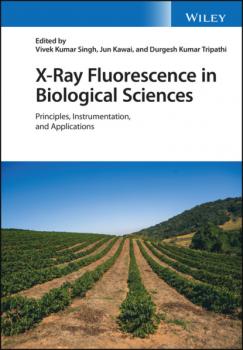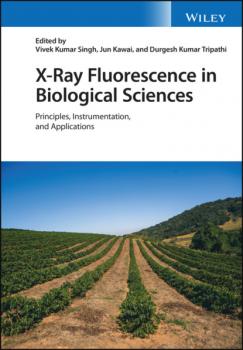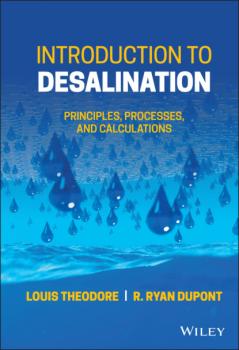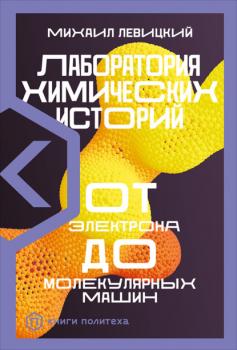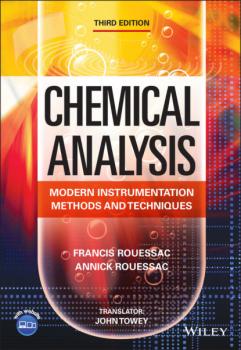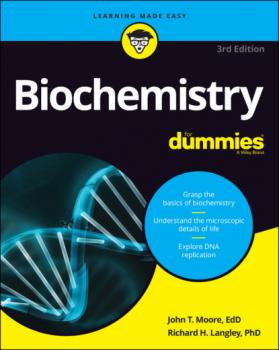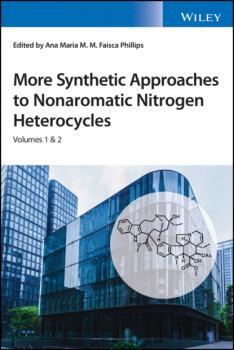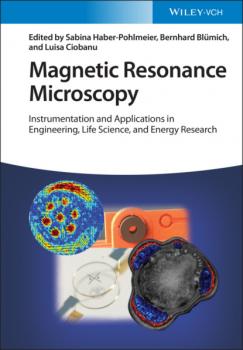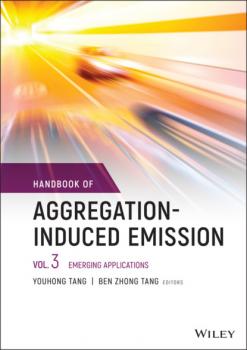Химия
Различные книги в жанре ХимияX-Ray Fluorescence in Biological Sciences
X-Ray Fluorescence in Biological Sciences Discover a comprehensive exploration of X-ray fluorescence in chemical biology and the clinical and plant sciences In X-Ray Fluorescence in Biological Sciences: Principles, Instrumentation, and Applications , a team of accomplished researchers delivers extensive coverage of the application of X-ray fluorescence (XRF) in the biological sciences, including chemical biology, clinical science, and plant science. The book also explores recent advances in XRF imaging techniques in these fields. The authors focus on understanding and investigating the intercellular structures and metals in plant cells, with advanced discussions of recently developed micro-analytical methods, like energy dispersive X-ray fluorescence spectrometry (EDXRF), total reflection X-ray fluorescence spectrometry (TXRF), micro-proton induced X-ray emission (micro-PIXE), electron probe X-ray microanalysis (EPXMA), synchrotron-based X-ray fluorescence microscopy (SXRF, SRIXE, or micro-XRF) and secondary ion mass spectrometry (SIMS). With thorough descriptions of protocols and practical approaches, the book also includes: A thorough introduction to the historical background and fundamentals of X-ray fluorescence, as well as recent developments in X-ray fluorescence analysis Comprehensive explorations of the general properties, production, and detection of X-rays and the preparation of samples for X-ray fluorescence analysis Practical discussions of the quantification of prepared samples observed under X-ray fluorescence and the relation between precision and beam size and sample amount In-depth examinations of wavelength-dispersive X-ray fluorescence and living materials Perfect for students and researchers studying the natural and chemical sciences, medical biology, plant physiology, agriculture, and botany, X-Ray Fluorescence in Biological Sciences: Principles, Instrumentation, and Applications will also earn a place in the libraries of researchers at biotechnology companies.
Introduction to Desalination
INTRODUCTION TO DESALINATION <p><b>Explore the principles, methods, and applications of modern desalination processes</b></p> <p><i>Introduction to Desalination: Principles, Processes, and Calculations </i>delivers a comprehensive and robust exploration of desalination highlighted with numerous illustrative examples and calculations.</p> <p>The book is divided into three sections, the first of which offers an introduction to the topic that includes chapters covering global water scarcity and the need for “new water.” The second section discusses the desalination process, including evaporation, reverse osmosis, crystallization, hybrid systems, and other potable water processes. The final part covers topics that include water conservation, environmental considerations of desalination, economic impacts of desalination, optimization, ethics, and the future of desalination.</p> <p>The book also includes:</p> <ul> <li>A comprehensive introduction to desalination, including discussions of engineering principles, the physical, chemical, and biological properties of water, and water chemistry</li> <li>An extensive engineering analysis of the various desalination processes</li> <li>Practical discussions of miscellaneous desalination topics, including the environmental and economic effects of the technology</li> </ul> <p>Perfect for process, chemical, mechanical, environmental, and civil engineers, <i>Introduction to Desalination: Principles, Processes, and Calculations</i> is also a valuable resource for materials scientists, operators, and technicians working in the field.</p>
Лаборатория химических историй. От электрона до молекулярных машин
Что происходит с молекулами в момент химических реакций и почему одни вещества становятся мягкими, а другие твердеют, одни приобретают упругость, а другие – хрупкость? Каким образом вязкая жидкая масса превращается в легкую приятную ткань и почему человек не может жить без полимеров? Какими были люди, совершившие величайшие открытия в химии, и какую роль сыграл элемент случайности в этих открытиях? Как выглядит лаборатория и так ли на самом деле скучна жизнь обычного лаборанта? Отвечая на эти и другие вопросы, Михаил Левицкий показывает, что химия – это весьма увлекательно!
Chemical Analysis
The new edition of the popular introductory analytical chemistry textbook, providing students with a solid foundation in all the major instrumental analysis techniques currently in use The third edition of Chemical Analysis: Modern Instrumentation Methods and Techniques provides an up-to-date overview of the common methods used for qualitative, quantitative, and structural chemical analysis. Assuming no background knowledge in the subject, this student-friendly textbook covers the fundamental principles and practical aspects of more than 20 separation and spectroscopic methods, as well as other important techniques such as elemental analysis, electrochemistry and isotopic labelling methods. Avoiding technical complexity and theoretical depth, clear and accessible chapters explain the basic concepts of each method and its corresponding instrumental techniques—supported by explanatory diagrams, illustrations, and photographs of commercial instruments. The new edition includes revised coverage of recent developments in supercritical fluid chromatography, capillary electrophoresis, miniaturized sensors, automatic analyzers, digitization and computing power, and more. Offering a well-balanced introduction to a wide range of analytical and instrumentation techniques, this textbook: Provides a detailed overview of analysis methods used in the chemical and agri-food industries, medical analysis laboratories, and environmental sciences Covers various separation methods including chromatography, electrophoresis and electrochromatography Describes UV and infrared spectroscopy, fluorimetry and chemiluminescence, x-ray fluorescence, nuclear magnetic resonance and other common spectrometric methods such atomic or flame emission, atomic absorption and mass spectrometry Includes concise overview chapters on the general aspects of chromatography, sample preparation strategies, and basic statistical parameters Features examples, end-of-chapter problems with solutions, and a companion website featuring PowerPoint slides for instructors Chemical Analysis: Modern Instrumentation Methods and Techniques, Third Edition , is the perfect textbook for undergraduates taking introductory courses in instrumental analytical chemistry, students in chemistry, pharmacy, biochemistry, and environmental science programs looking for information on the techniques and instruments available, and industry technicians working with problems of chemical analysis. Review of Second Edition : “An essential introduction to a wide range of analytical and instrumentation techniques that have been developed and improved in recent years.” – International Journal of Environmental and Analytical Chemistry
Biochemistry For Dummies
It’s alive! It’s alive! (Thanks to biochemistry, that is.) Biochemistry is the science of the chemical processes that allow for…well…life. If it moves, breathes, eats, or sleeps, biochemistry can probably explain how. So, it stands to reason that the fundamentals of biochemistry can get a little complicated. In Biochemistry For Dummies, you’ll explore the carbons, proteins, and cellular systems that make up the biochemical processes that create and sustain life of all kinds. Perfect for students majoring in biology, chemistry, pre-med, health-services, and other science-related fields, this book tracks a typical college-level biochemistry class. It simplifies and clarifies the subject with easy-to-follow diagrams and real-world examples. You’ll also get: Explorations of cell biology, carbohydrates, proteins, lipids, and other fundamental building blocks of life Discussions of the basic structures common to all living organisms Treatments of the microscopic details of life that make us all tick If you’re looking for a hand with some of the trickier parts of biochemistry—or you just need an accessible overview of the subject—check out Biochemistry For Dummies today!
Applications of Polymer Nanofibers
APPLICATIONS OF POLYMER NANOFIBERS Explore a comprehensive review of the practical experimental and technological details of polymer nanofibers with a leading new resource Applications of Polymer Nanofibers delivers a complete introduction to the basic science of polymer nanofibers as well as a review of their diverse applications. The book assesses their potential for commercialization and presents contributions from leading experts emphasizing their practical and technological details. New and up to date research findings are presented throughout the book in areas including filters, fabric, energy, fuel cells, batteries, sensors, biomedicine, drug delivery, tissue engineering, and wound dressings. The book also presents a fulsome analysis of the technology of electrospinning, the most convenient and scalable technique for nanofiber production. It also provides readers with practical information on relevant surface modification techniques. Applications of Polymer Nanofibers effectively balances theoretical background with practical applications of the technology, including insights into polymer nanofiber materials that will be useful for advanced students and researchers. Students, researchers, and industry professionals will also enjoy the inclusion of: A thorough introduction to electrospinning parameters and resulting nanofiber characteristics, including theoretical and practical considerations An exploration of textile applications of nanofibers, like protective clothing, filter fabrics, wearable devices, functional fabrics, and biomedical textiles A review of nanofiber mats as high-efficiency filters, including filtration developments, filters made with nanofibers, and the future outlook for nanofiber filters A treatment of nanofiber-based chemical sensors, including sensor materials, approaches to nanofiber sensor design, and gravimetric nanofiber sensors Perfect for researchers and graduate students studying polymer science and engineering, chemical engineering, materials science, and nanotechnology. Applications of Polymer Nanofibers will also earn a place in the libraries of industrial researchers concerned with electrospinning, air filtration, fabrics, drug delivery, catalysis, and biomedicine.
